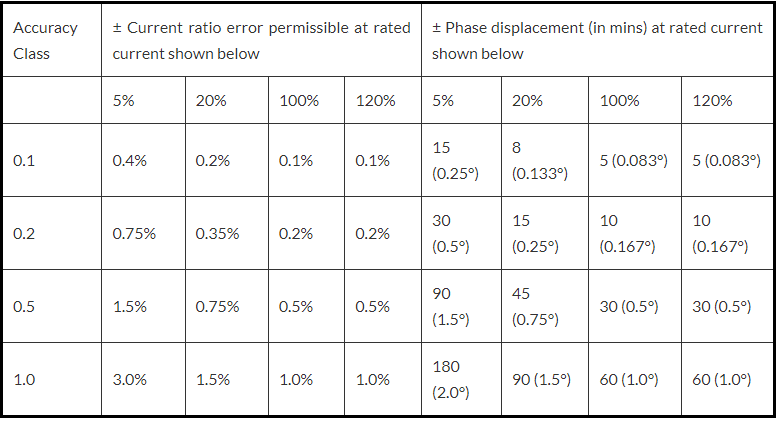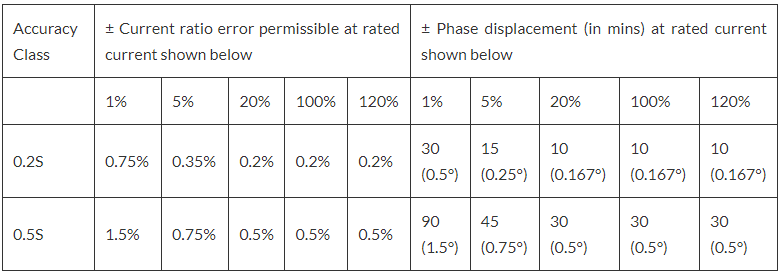Current transformers (CTs) are essential power systems for measuring and protecting against overcurrent. Their accuracy class determines their precision when converting primary current to secondary current. IEC 61869-2 provides standards regarding their performance and testing methods.
This blog will delve deep into the IEC 61869-2 standard and focus specifically on accuracy classes defined by CTs and their significance. We will examine tables defining them, discuss their differences, and offer visual depictions. We'll look into any relationships between accuracy classes and phase displacement outlined within it as the IEC 61869-2 standard specified.
IEC 61869-2 standard
Let me start by sharing these two tables.
IEC 61869-2 Table 201
IEC 61869-2 Table 202
Note that Table 202 has two differences compared to 201:
1. It specifies behavior at 1% of the rated current.
2. It is more rigorous (difficult to achieve) at lower current percentages.
Of course, we can visualize the data in the tables as well. In this graph, I’m depicting the 0.5 and 1.0 classes.
0.5 Class versus 1.0 Class

Perhaps even more interesting, here’s the difference between 0.5 and 0.5S Classes. Note that the standard doesn’t specify how a 0.5 Class CT should behave below 5% and that the 0.5S class is more rigorous below 100% of the rated current.
0.5 Class versus 0.5S Class

I’m too lazy to draw similar graphs for the allowed phase shift, but hopefully, you get the idea. It is important however to realize that it is the combination of compliance with the accuracy AND the phase displacement tables that allows a unit to be IEC 61869-2 compliant.
Conclusion
Understanding IEC 61869-2 will give us an in-depth knowledge of current transformer accuracy classes and their use across a range of power systems and industries, offering more insights on this subject matter. Stay tuned for updates!
You Might Also Like: What Exactly Is Single Pair Ethernet?










